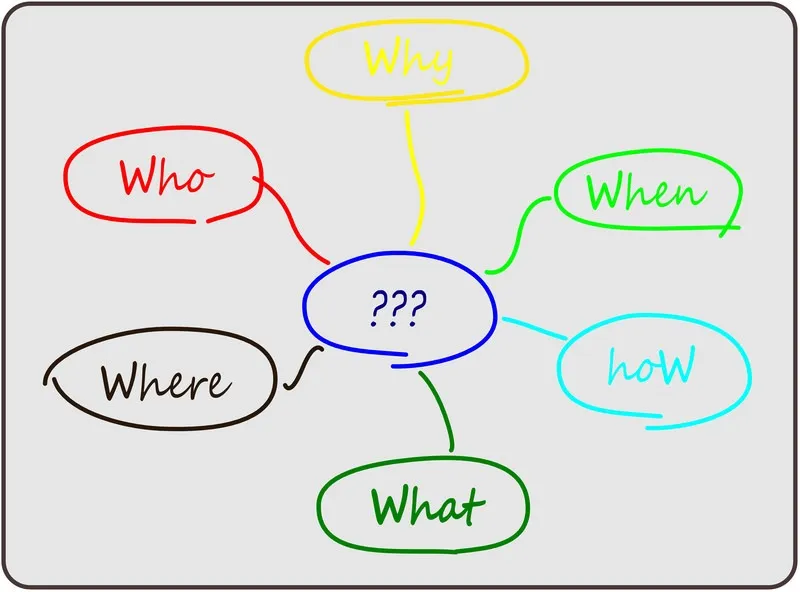Problems, specifically at the workplace, are not something that anyone likes. But, in reality, problems are part of our daily work routine. Every job requires some level of problem-solving skills to tackle everyday situations. Problem-solving is the act of understanding and finding a solution to a problem. It depends on the complexity and type of the problem. This may require the use of mathematics and your imperative thinking skills.
Many tried-and-true problem-solving strategies can be used to solve complicated situations in work and personal lives. These are some problem-solving techniques that you can try in your own practice.
Define The Problem

Source: txm.com
It is simple to solve a problem by first defining the problem. It’s not as simple as you think. It would be best to listen to all sides and not bring your preconceived ideas to the discussion. This is a crucial part of the process. There will be different amounts of information depending on the problem. This will help you figure out what went wrong. Any problem should have at least some data. It’s up to you to collect as much information as possible and analyze it objectively. If you want any professional help to determine the exact problem, reach out https://www.zenflowchart.com/.
Be Active and Relaxed
Problem-solving can be difficult and time-consuming. It is essential to approach problem-solving with a relaxed and playful mind. Finding the right solution can be very challenging if you are too focused. It can be exhausting to become too obsessed and fixated on finding the best solution. Instead of viewing it as a burden, you should think about relaxing the process. A relaxed and playful mindset is often a key to innovative and better resolutions.
List All possible solutions

Source: twitter.com
After identifying the root cause of the problem, you can brainstorm solutions. You’ll find the best solution by brainstorming all possible options. When brainstorming ideas, you should consider the thoughts of everyone. Also, take into consideration all the data analysis perspicuity. You might also benefit from the input of others during this stage. They may have ideas that you didn’t know about. It is possible to consider both short-term and long-term solutions depending on the problem. Some options might take some time to implement.
Assess All The Options Thoroughly
Every option has advantages and disadvantages. It’s essential to list them all and how they could affect main stakeholders. After narrowing down your best possible solutions, it would be the best idea to ask employees to give feedback to you, and maybe you have missed something. It is essential to consider how each solution option fits in with the larger goals of your business.
Choose An Option

Source: pixabay.com
Only then can you decide which solution to choose. You should select the answer that solves the problem the most efficiently while still considering the best interests of all involved. It may be possible to combine two options to delight more people.
Make A Plan For Implementation
You might think that you are done with the problem and can relax. If you want to make your problem-solving method genuinely effective, there are two additional steps. First, you need to develop an execution program. Effective implementation is key to solving the problem.
Make an implementation plan that outlines how you will implement your solution. Many people use this method to solve problems. It is essential to plan for any possible changes in your answer and monitor compliance.
Communicate Your Solution

Source: edf.academy
In the problem-solving process, one more step that is crucial is to Communicate your solution. How will anyone know what you have decided without this critical part of the process? It is essential to communicate your decision with all those affected by it. It is unlikely that everyone will be 100% happy with the decision. You must explain why you made this decision and the pros that make it better than other options.
Document All Agreements
Documenting all agreements is a critical component of problem-solving skills. Don’t depend on the memories. Instead, document all agreements throughout the problem-solving process. This will provide you with a point of reference for solving the problem. The documented agreements can be referred to again and modified as needed. Teams can also use documented deals to help them hover over the same situations in the future.
Common Problem-Solving Strategies At Workplace

Source: slidemodel.com
There are many ways to identify problems and solutions. These are common strategies that you can use, along with the most effective solutions.
-
Trial and error
A small team is not usually required to solve a trial and error problem. You can use trial-and-error issue solving to identify the root cause and quickly test the possible solutions to determine if they work. This method of problem-solving is often used in tech support teams for troubleshooting.
-
The 5 Whys
This technique is excellent for quickly getting to the bottom of a problem. You only need to ask “Why” five times. Begin with the problem and then ask why it happened. Be objective in your answers. Keep asking “Why?” four times more. You will eventually find the solution to your question. Then you can begin examining for an answer. This technique presents the most significant challenge in giving objective, rational responses to every “why.” Be strong against the temptation to answer only from your point of view. Instead, look at the logic behind why it happened.
-
SWOT analysis
A SWOT analysis will help you identify the strengths and flaws in a particular solution. The acronym SWOT means:
- Strength: Why is this solution so good for this situation?
- Weaknesses: What are the shortcomings of this answer? Are there any ways to improve them?
- Potential: What other advantages could this resolution get?
- Threats: Do these decisions have any negative impact on your team?
You can identify solutions and highlight their strengths, weaknesses, opportunities, threats, and potential risks. This problem-solving strategy works well when narrowing down answers and comparing and contrasting various resolutions.
Bottomline
Hope, these techniques will help you to solve your problems. Apart from this, don’t forget to celebrate your victory, how far you have come after solving complicated issues. Appreciation and celebration are essential for your problem-solving team, and they encourage them to be a more flexible, efficient, and effective team. You’ll achieve more if you work together on more problems.




